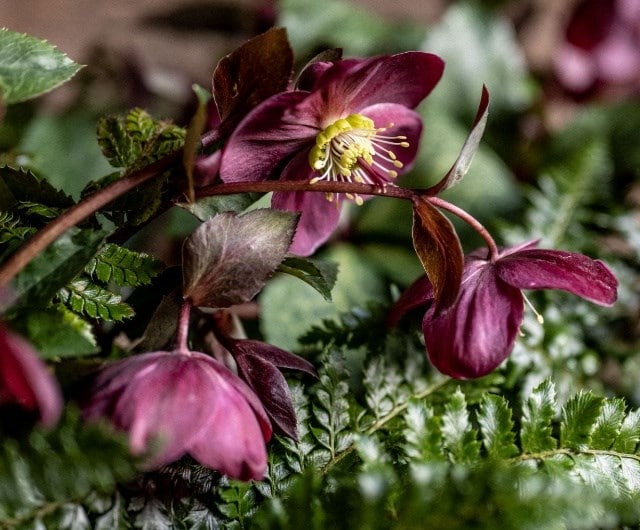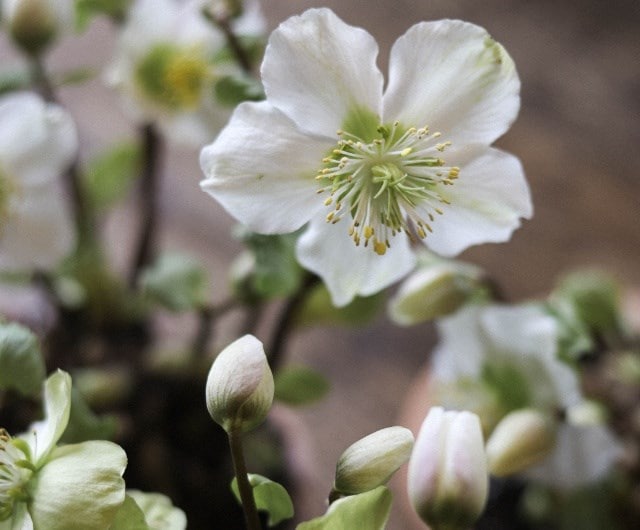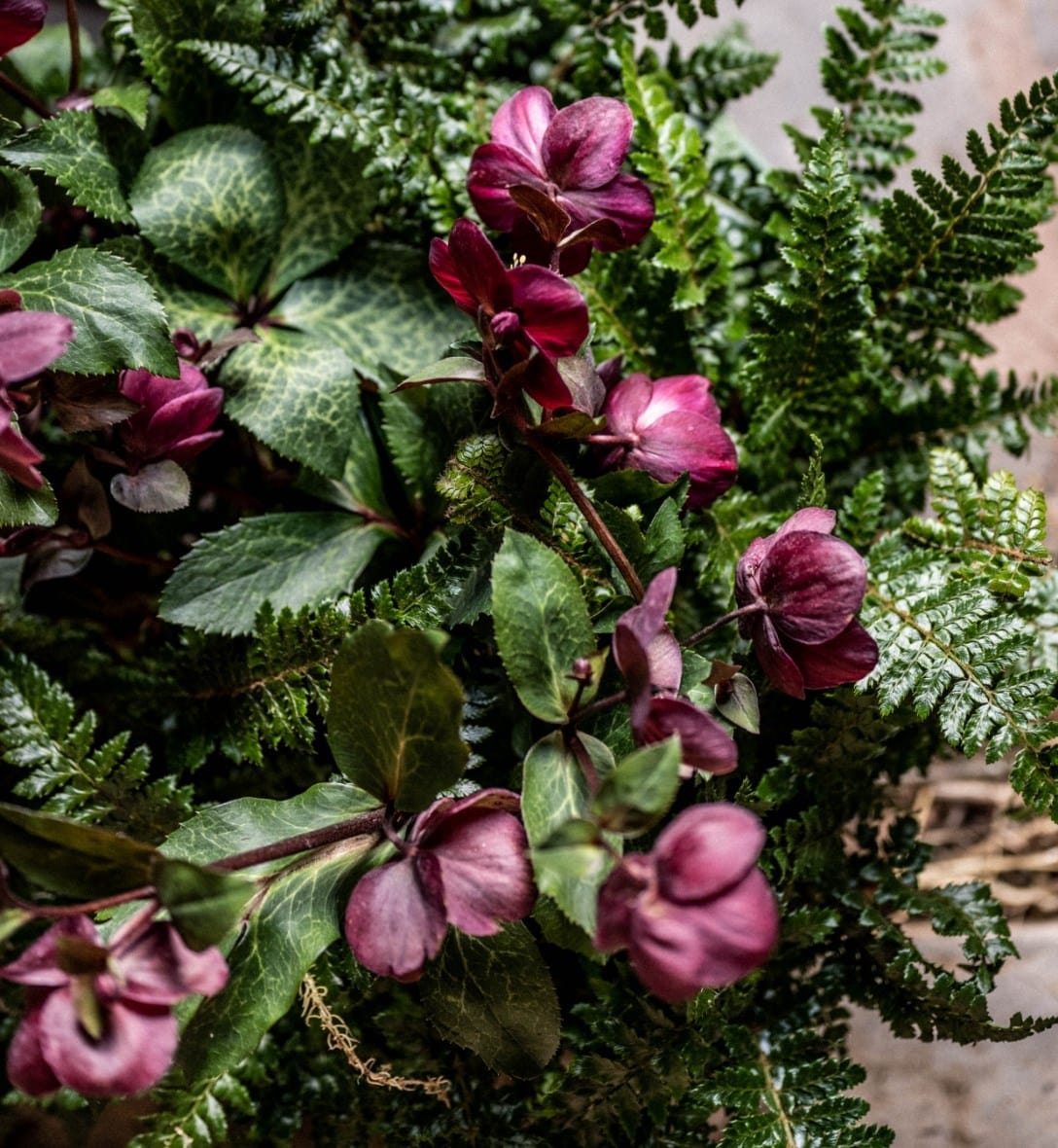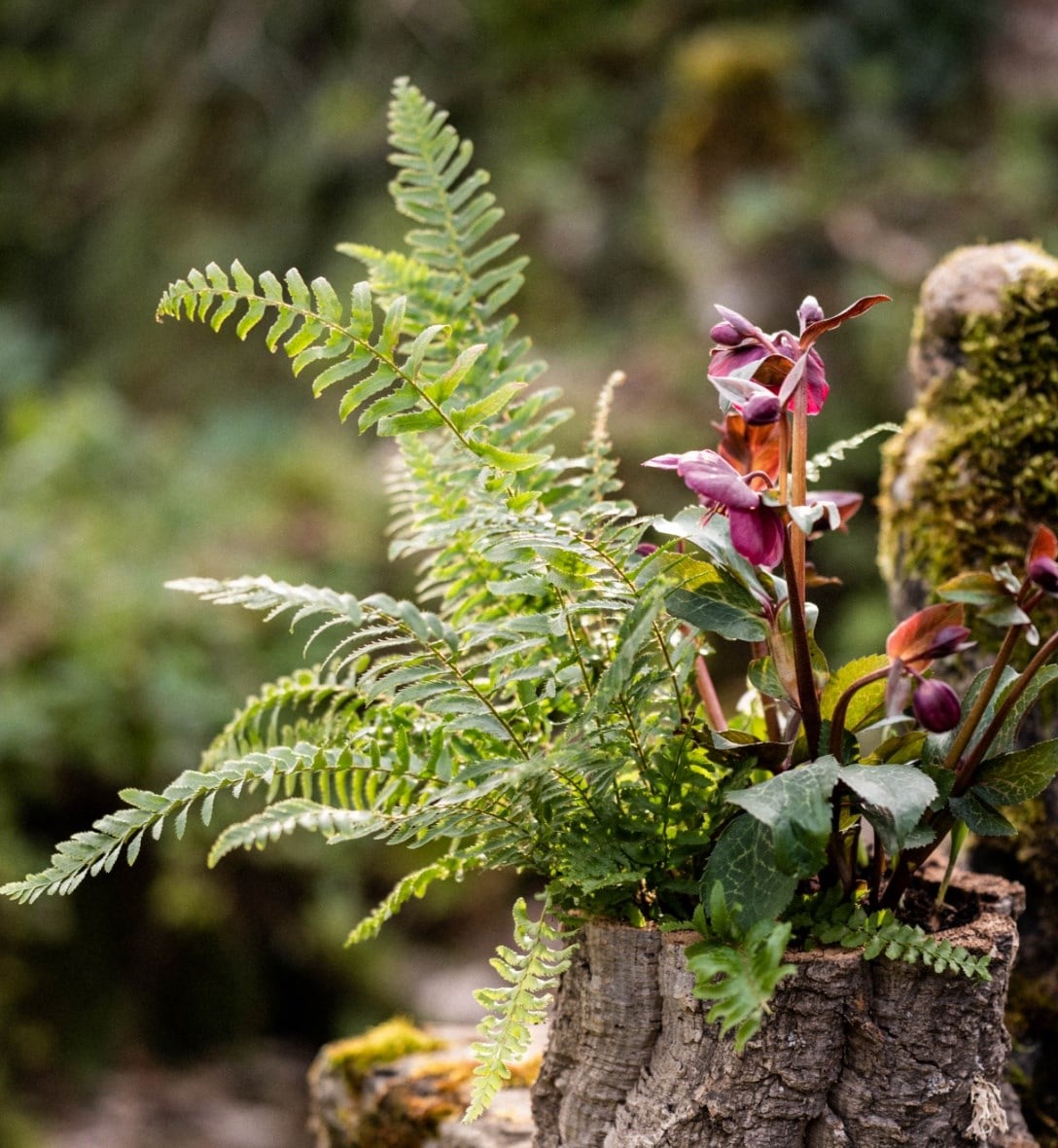Heavenly hellebores, a planting guide
Offering much needed colour over several months from midwinter, the long-lasting flowers of hellebores are exquisite and unique. They come in a wide range of colours that includes white, yellow, green and all the shades of pink from light blush to deepest plum or near-black.


Where to grow hellebores
Super-easy to grow, hellebores will tolerate most soils provided they are relatively fertile and freely draining, and as they flourish in partial sun, they are perfect for providing evergreen groundcover for those shadier areas of the garden (including patio pots), where they mix happily with spring flowering bulbs, ferns and herbaceous geraniums.
How to plant hellebores
The ideal time to plant hellebores is autumn to spring. Hellebores like neutral to alkaline soils rich in organic matter and suffer in dry or water logged soils. Add lots of well-rotted leaf mould or organic matter to the planting hole. Apply a generous 5-7 cm (2-3in) mulch of well-rotted organic matter around the base of the plant in autumn and provide a top-dressing of general fertiliser each spring. If growing on acid soils, mulch with spent mushroom compost as it has lime in it, which the plants will enjoy.
General maintenance tips for hellebores
In Dec cut away all the leaves so that when the new flowers appear they will be surrounded by young, healthy foliage. This short haircut will help prevent hellebore leaf spot, which can be a problem if the foliage is left on all year. It's advisable to place hellebore foliage into a green bin, rather than on the compost heap, for this reason.
Most hellebores are semi-evergreen perennials so they can lose some of their leaves in winter. In colder regions or more exposed gardens, they may lose them all, but then fresh new growth appears again in spring.
In early May, remove the flowering stems before they set seed. Feed your hellebores with a slow-release fertiliser in early May too (such as Vitax Q4), for hellebores are greedy feeders.
Different types of hellebores
It is no surprise that the popular ones are called Lenten ( Helleborus x hybridus ) and Christmas roses ( Helleborus niger) as many flower for Christmas. They particularly like dappled shade and prefer chalky, limestone soils but will grow in acid soils if well mulched. They are best displayed in raised beds or containers so the full beauty of their pendent flowers can be admired. Always provide shelter from fierce, cold winds.
Preventing hellebore leaf spot
The disease produces round black spots which become dark dry areas. The spots are noticeable on new growth from winter through summer. Practise good hygiene by removing and destroy any infected leaves.







